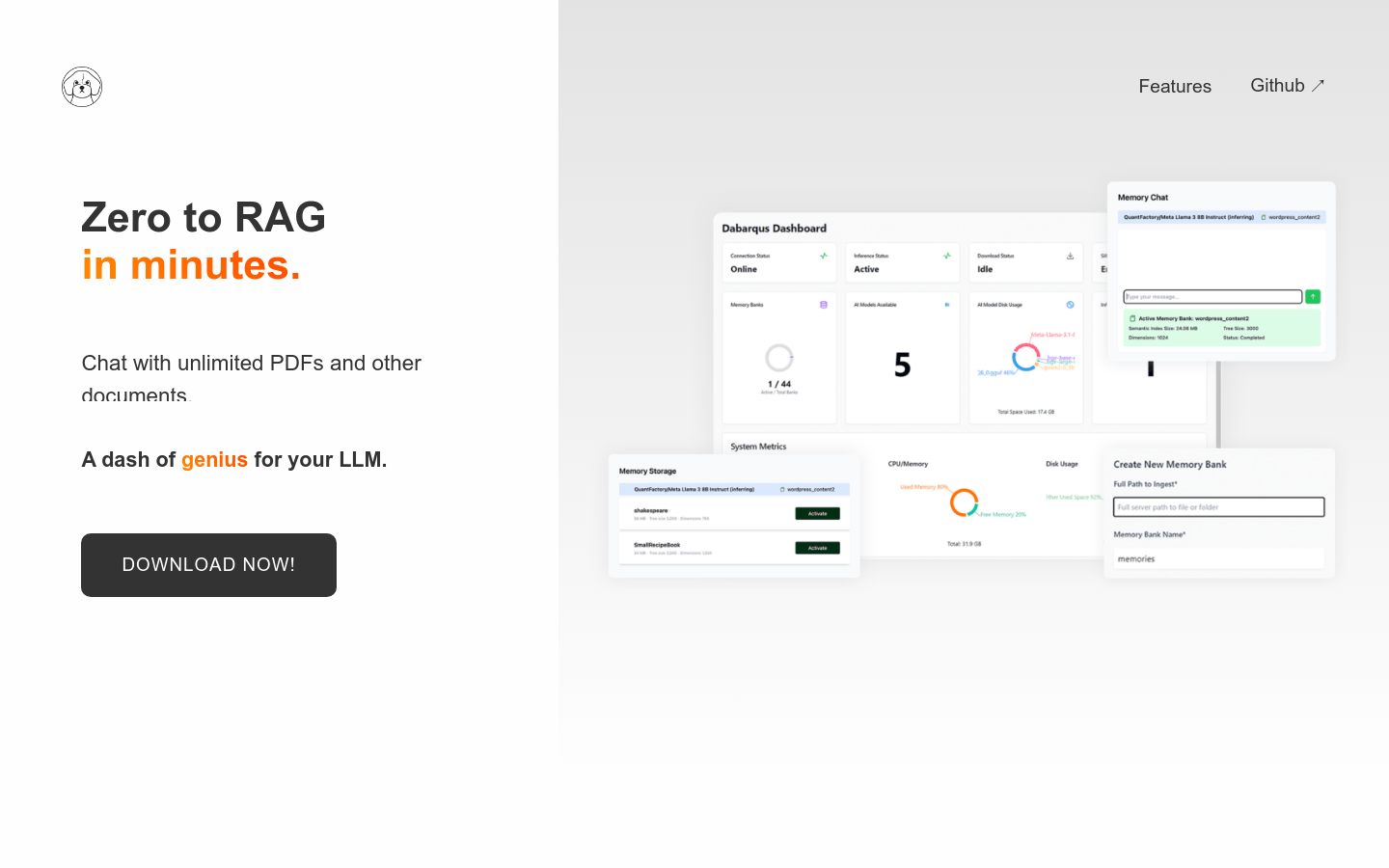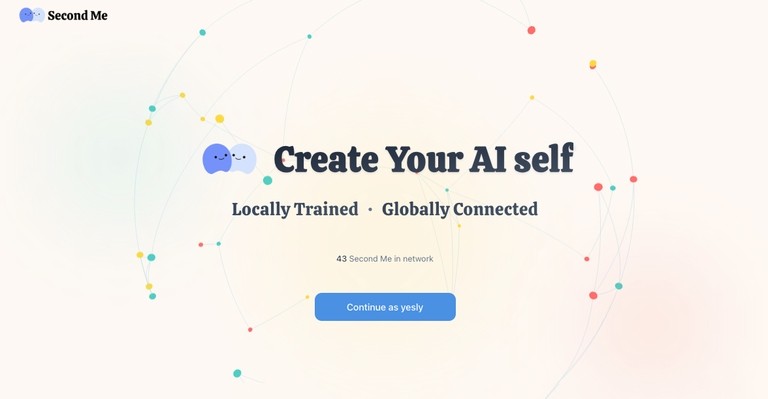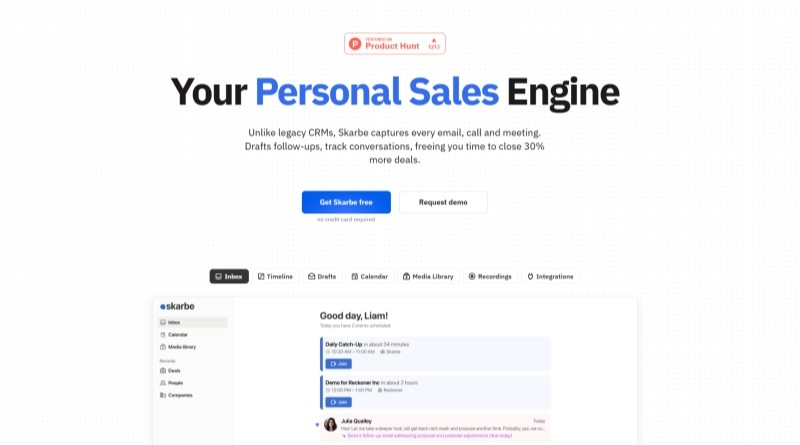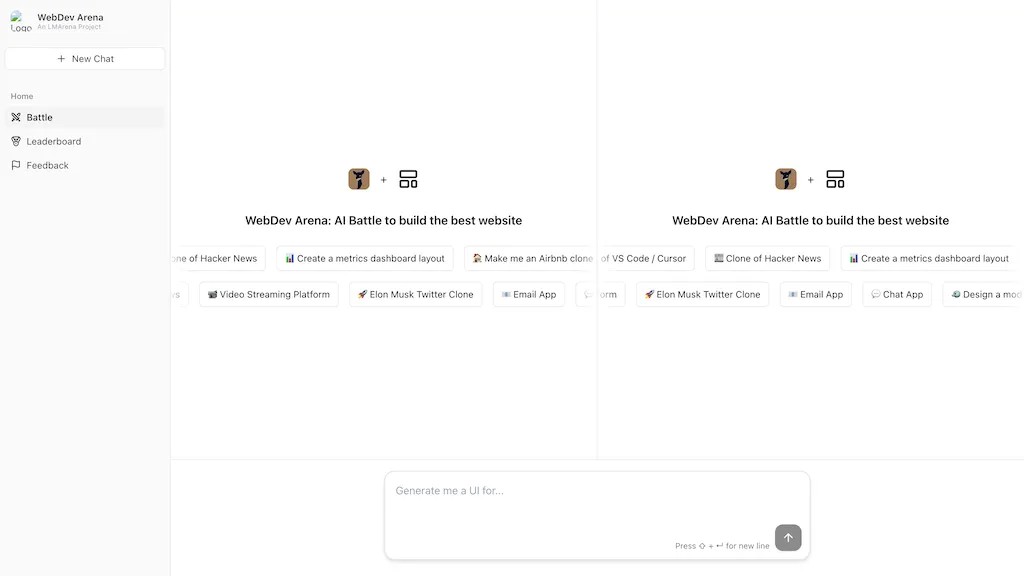
What is Dabarqus?
Dabarqus is a Retrieval Augmented Generation (RAG) framework that enables users to integrate private data with large language models (LLMs). This tool simplifies the process by providing REST APIs, SDKs, and CLI tools. Users can easily add various data sources like PDFs, emails, and raw data to semantic indexes called "memory banks."
It supports LLM-style prompts, making it user-friendly without the need for special queries or new query languages. Additionally, Dabarqus allows for creating and managing multiple memory banks, organizing data by topic, category, or other groupings.
Target Audience:
Developers and data scientists who need to enhance AI language models with private data will find Dabarqus useful. It streamlines data integration and querying, helping these professionals develop and deploy language model-based applications more efficiently.
Example Scenarios:
Developers use Dabarqus to integrate internal enterprise PDFs into chatbots for better information retrieval.
Data scientists store research data in memory banks using Dabarqus for use in machine learning models.
Companies combine customer service records with language models through Dabarqus for personalized customer service.
Key Features:
Supports integration of multiple data types such as PDFs, emails, and raw data.
Uses LLM-style prompts for interaction with memory banks, eliminating the need for specialized query languages.
Offers REST APIs for easy integration with existing development tools.
Supports creation and management of multiple semantic indexes (memory banks).
Provides Python and JavaScript SDKs for seamless project integration.
Outputs are compatible with LLM providers like ChatGPT and Ollama.
Compatible with Linux, macOS, and Windows platforms.
Getting Started:
1. Download and install the Dabarqus client.
2. Use CLI or API to store data sources like PDFs and emails in designated memory banks.
3. Query memory banks using LLM-style prompts to retrieve relevant information.
4. Integrate retrieved data into existing applications using Dabarqus REST APIs and SDKs.
5. Create and manage multiple semantic indexes (memory banks) as needed.
6. Integrate outputs with other LLM providers.
7. Deploy and use Dabarqus on Linux, macOS, and Windows platforms.







